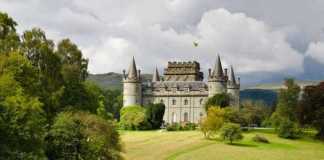Romania is an East European country bordered by Bulgaria, Hungary, Serbia, Moldova and Ukraine. The east coast is on the Black Sea which you can enjoy during the summer months. The people are proud of being Romanian and have many traditions which even the young believe in. Romania was underrated as a holiday destination because of the dictatorial Communist regime that was in place from 1947 until 1989. Since this came to an end, Romania has been growing in popularity with travellers. There are many attractions to draw people in, the most famous being the legend of Dracula and his home in Transylvania. Romania is known for beautiful landscapes where you can hike, such as the Carpathian Mountains. There are also many UNESCO World Heritage sites to visit, such as the Danube Delta. Let’s take a look at what Romania is famous for.
Contents
- What Is Romania Known For?
- Top Tours
- 1- Bucharest
- 2- Transylvania And Dracula
- 3- The Communist Party
- 4- The Danube River And The Danube Delta
- 5- The Carpathian Mountains
- 6- The Painted Monasteries Of Bucovina
- 7- Castles
- 8- Salt Mines
- 9- Traditional Food
- 10- The Black Sea
- 11- Sighisoara Citadel
- 12- The Medieval Town Of Brasov
- 13- National Parks
- 14- The Palace Of Parliament
- 15- George Enescu
What Is Romania Known For?
Top Tours
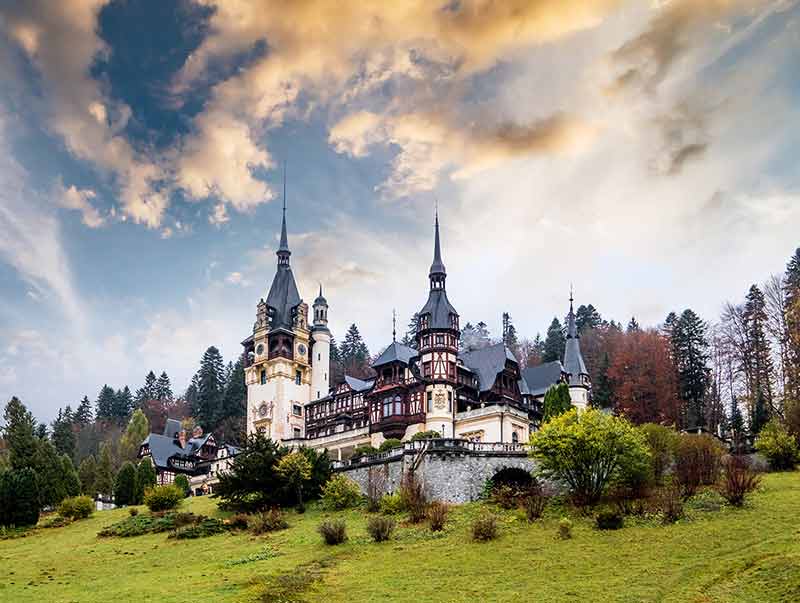
- Bucharest: Dracula’s Castle, Peles Castle, & Brasov Old Town – straight out of a Romanian fairytale.
- Bucharest: Palace of Parliament Tickets and Guided Tour – do not miss this!
- Cluj: Turda Salt Mine, Corvin Castle, Alba Carolina Tour – an impressive tour you will enjoy.
1- Bucharest
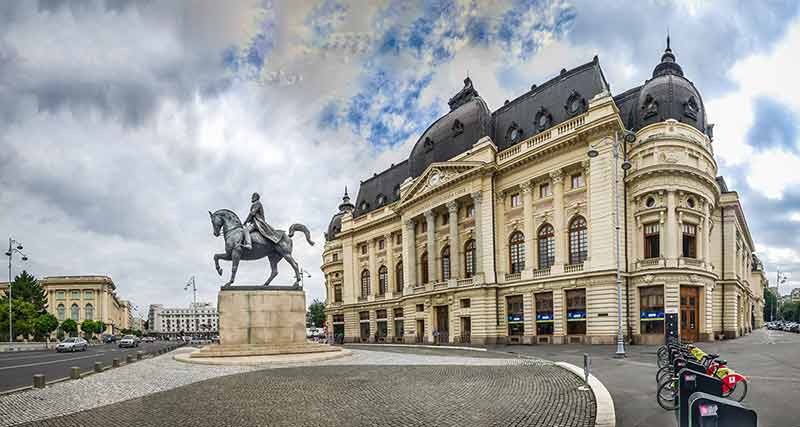
Bucharest is the capital of Romania and is the perfect example of a fusion between the past and the present.
The Old Town fits this criteria to a tee with buildings that are a mixture of Baroque, Neoclassical and Art Nouveau architecture, but many are now trendy bars, top-quality restaurants and interesting shops.
The Old Town is popular with locals and tourists alike, especially in the evenings when it comes alive.
There are many historical landmarks in the city, such as the Palace of the Parliament where the Romanian Parliament sits, and the Athenaeum, the famous concert hall, situated in George Enescu Square.
Religion is very important to the Romanians, and most are Orthodox Christians.
You can see several important religious landmarks in the capital, such as the Biserica Sf, Nicholae Orthodox Church, and the Stavropoleos Monastery.
Bucharest is often called ‘Little Paris’, partly because many Romanian migrants returned from France and brought French customs and the language with them.
In addition, many buildings are similar, such as the Arcul de Triumf which is a wooden arch like the Arc de Triomphe in Paris.
2- Transylvania And Dracula
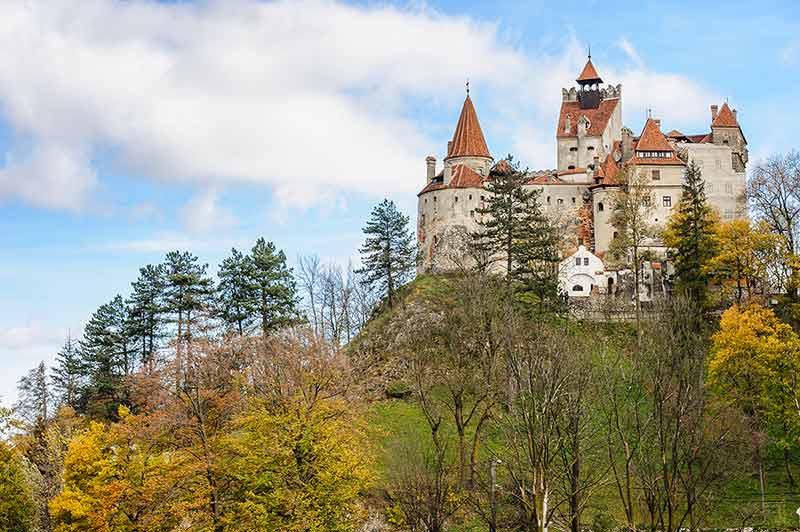
There aren’t many people who haven’t heard of Transylvania, associating it with the mythical Dracula, the blood-sucking vampire.
However, Transylvania is a real place in central Romania, bordered to the east and south by the Carpathian Mountains and to the west by the Apuseni Mountains.
It is a beautiful region with lush forests and picture-perfect valleys.
Irish novelist Bram Stoker brought Dracula to fame with his novel published in 1897 and although Dracula is fictional, he is based on a real person, Vlad III, also known as Vlad the Impaler.
He was a thoroughly evil man who tortured his enemies, mainly by impaling them, but also by boiling, burning and strangling them.
It is said that he even drank their blood, so inspiring the story of Dracula.
Bran Castle, a beautiful Medieval castle has earned the reputation of being Dracula’s home and it pulls in the tourists.
However, Vlad III lived in Poenari Castle which is now in ruins.
3- The Communist Party
Romania was under a Communist regime from 1947 until 1989.
The Soviet Union held a military presence there from 1944 to 1958 and Romania remained a satellite of the Soviet Union until 1964 when it declared its independence.
Nicolae Ceausescu took over control of the country and was, in effect, a dictator.
He committed genocide and was responsible for around 60,000 deaths.
After a national uprising, he was finally held to account by a special military tribunal and sentenced to death.
He and his wife were executed by a firing squad on Christmas Day in 1989.
What remains now of the Communist regime are tall blocks of apartments in the major cities, built so that the people lived in the same type of accommodation.
4- The Danube River And The Danube Delta
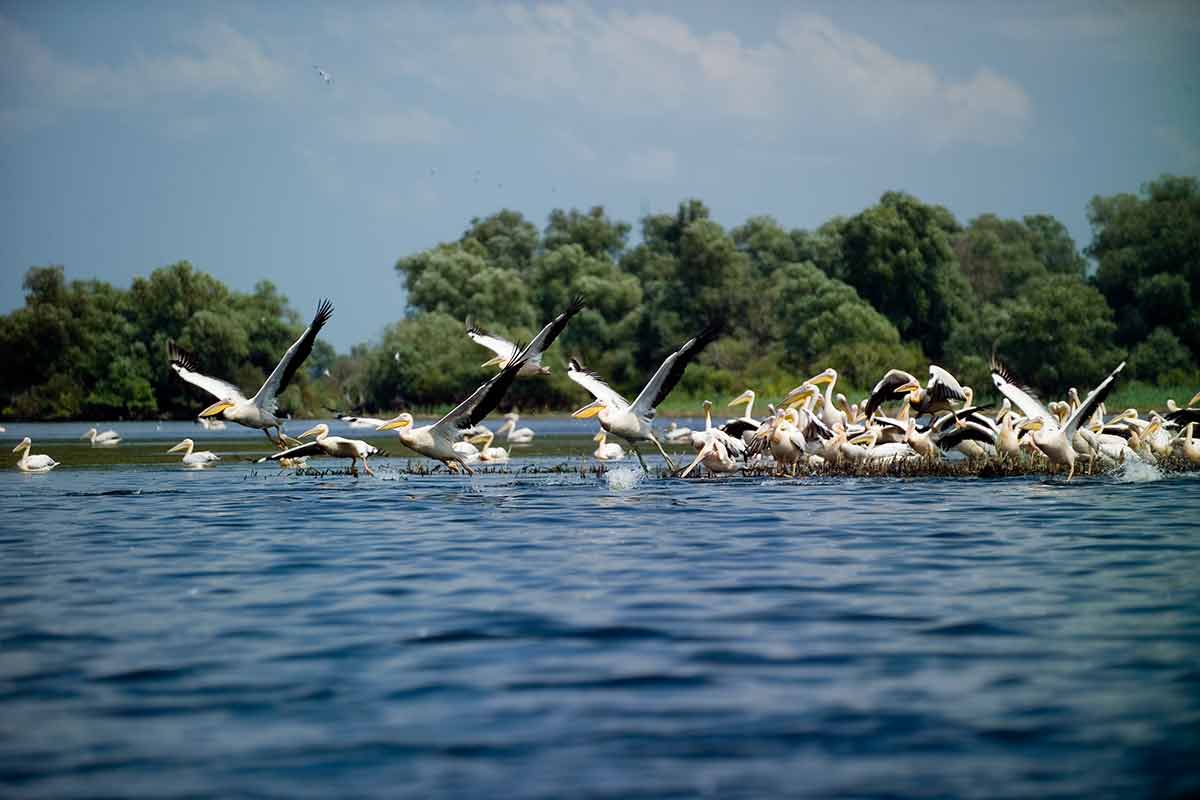
The Danube River is the second longest river in Europe, the first being the Volga.
It runs through ten countries, starting in the Black Forest in Germany and ending in Romania, where it flows into the Black Sea.
The Danube River is beautiful, with many places along the way where you can hire a boat, swim and fish.
At Tulcea, the river splits into three arms, the Chilia, the Sulina, and the Sfantu Gheorghe, and these create wetland marshes called the Danube Delta.
It is one of the seven UNESCO World Heritage Sites in Romania and is the second-largest delta in Europe as well as being the best preserved.
It covers 5.698 square km (2.200 square miles) with canals, lakes, reed islands, and marshes.
The Danube is a paradise for bird watchers with birds such as the white pelican, the Dalmatian pelican, pygmy cormorants, white-tailed eagles, the glossy ibis and bitterns to be seen.
There are also animals to try and spot, including golden jackals, wildcats, otters, wild boar, roe deer and pine martens.
5- The Carpathian Mountains
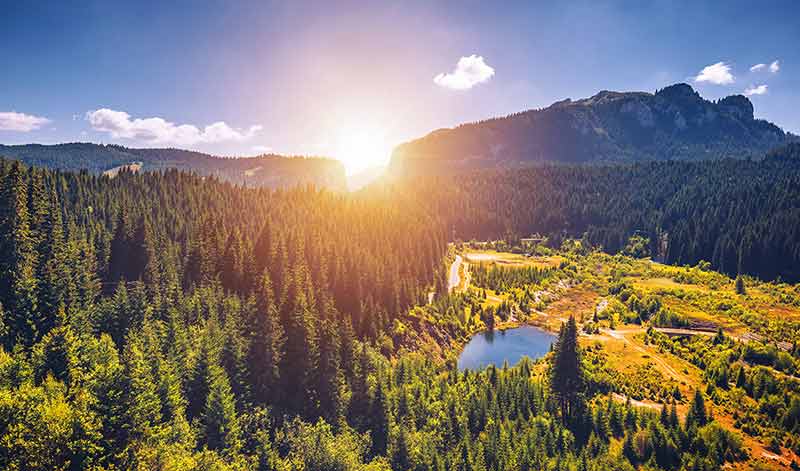
The Carpathian Mountains cover around a third of Romania and form a semi-circle around Transylvania.
They are spectacular with their large areas of forests, grasslands, gorges, caves, volcanic lakes, and river networks, including the Danube Delta.
There are around 400 species of mammals living in the Carpathian Mountains, including the unique Carpathian chamois. 60% of Europe’s brown bears live here as well.
The mountains are a hiker’s paradise, but there are plenty of other attractions such as the Scarisoara Ice Cave in Apuseni Nature Park.
The cave is 46.8 metres (153.6 feet) down, and here you will find some spectacular ice structures, including six-metre (19.68-feet) high stalagmites.
You can go horse-riding in the Calmani National Park where you will see strange volcanic shapes, old craters, and the largest caldera in the Carpathian Mountains.
Exploring Eastern Europe? You may also like:
- 20 Landmarks in Bulgaria
- 20 Bulgarian Cities
- 20 Things To Do In Sofia
- 22 Landmarks in Hungary
- 20 Cities in Hungary
- 15 Things Hungary Is Famous For
- 22 Castles in Czech Republic
- 21 Landmarks in Czech Republic
- 20 Things To Do In Prague At Night
- 15 Things To Do In Prague
- 20 Day Trips From Belgrade
- 10 Things To Do In Belgrade
- 20 Cities in Serbia
- 20 Things To Do In Baku
- 20 Slovakian Cities and Towns
- 20 Slovenian Cities and Towns
- 20 Latvian Cities and Towns
- 20 Things To Do In Tallinn
- 20 Castles in Poland
- 20 Landmarks in Poland
- 20 Polish Drinks
- 20 Cities in Poland
- 20 Things To Do In Warsaw
- 20 Things To Do In Krakow
- 20 Things To Do In Krakow At Night
- 20 Things To Do In Gdansk
- 20 Castles in Romania
- 20 Landmarks in Romania
- 20 Cities in Romania
- 20 Castles in Belarus
- 20 Things To Do In Tbilisi
- 20 Things To Do In Armenia
- 20 Cities In Armenia
- 20 Things To Do In Riga
- 20 Things Romania Is Famous For
6- The Painted Monasteries Of Bucovina
The Painted Monasteries of Bucovina are a UNESCO World Heritage Site.
Eight monasteries in Moldavia and Bucovina were built in the 15th and 16th centuries and what is special about them is that they are not only painted inside, but outside as well.
The artwork is intricate and detailed, and they are a unique phenomenon in Europe.
The paintings are Byzantine in style and have been preserved well.
The paintings aren’t random but follow religious themes and stories, the aim being to teach the Bible to poorer people who couldn’t afford formal education.
The most impressive of the monasteries is Varonet which was built by Stephen the Great of Moldovia in 1488.
The decorations are so elaborate that it is sometimes called the Sistine Chapel of the East. Book a tour here.
7- Castles

Romania has many beautiful castles which are set in spectacular natural areas.
I have already mentioned Dracula’s Bran Castle, but many others are worth visiting.
Peles Castle, in the Carpathian Mountains, was built between 1873 and 1914 as a summer palace for the Romanian royal family.
It is in excellent condition and houses thousands of beautiful artefacts. It looks as if royalty still lives there.
Peles castle was taken over by the Communists in 1947 after Micheal I was forced to abdicate.
It served as a museum between 1953 and 1975 and became a cultural site after the revolution of 1989.
Corvin Castle has been named as one of the scariest castles in the world.
This is because it was the last place that Vlad III was kept prisoner.
It was owned by the kings of Romania and is a Gothic building, constructed around 1446.
Peleș Castle is at Aleea Peleșului nr 2, Sinaia, Prahova
Corvin Castle is at Strada Gabriel Bethlen nr 7, 331141, Husedoara
8- Salt Mines
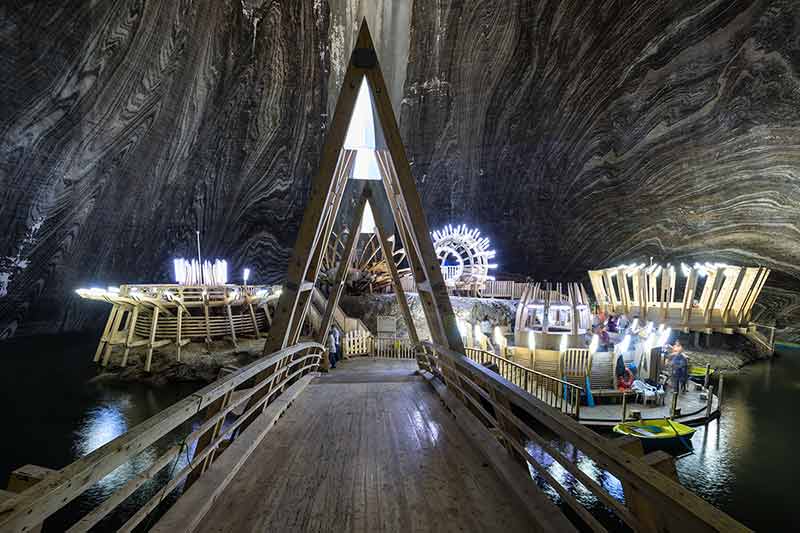
Of Romania’s 17 salt mines, the most famous is the Turda Salt Mine, which is still operational.
It is thought that it was used for salt extraction as far back as ancient Roman times, but we definitely know that it produced table salt from the Middle Ages until the 1930s.
The mine was then renovated, and salt extraction started again in 2010, however, it was opened as a tourist attraction in 1992.
As well as touring the mine, you can take advantage of a halotherapy centre, which involves breathing in salty air.
This is believed to help treat respiratory conditions, such as bronchitis and asthma.
Dress up warmly if you visit the mine as the temperature is around 10C (50F) all year round.
It is interesting to note that there is so much salt in the Turda Salt Mine that it would supply salt for everybody in the world for 60 years.
9- Traditional Food
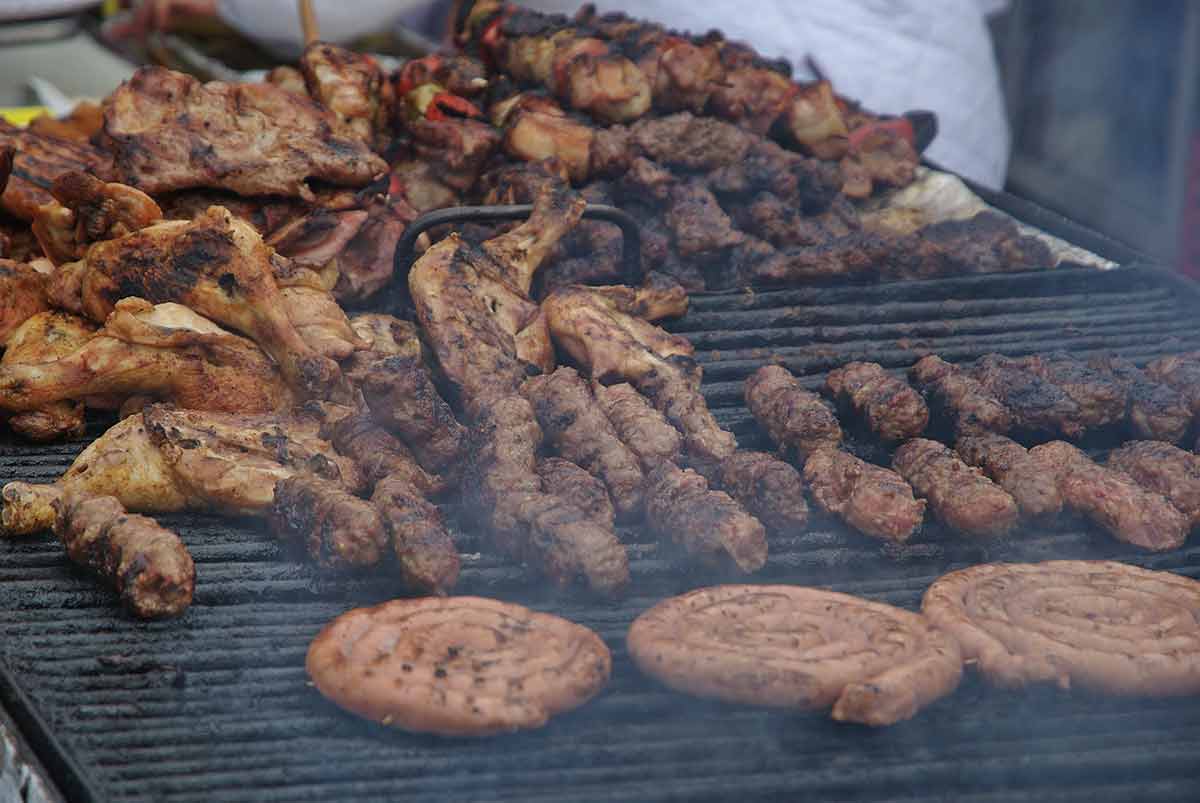
Romania is a meat-lovers paradise, so it’s not the best place for vegans or even vegetarians.
Much of the food is hearty as the winters are cold.
One of the most popular foods is sarmale, cabbage rolls stuffed with rice and pork or beef.
They are traditionally eaten at special events, Christmas and the New Year, but they are so popular that people eat them year-round.
Mamalgia is another dish that the Romanians enjoy.
It is a porridge made from maize flour and is called polenta in Italy usually paired with other food such as meat, cheese or fruit.
It is often rolled into balls when cooked and eaten with your hands.
Soup is another warming dish that is popular in Romania.
Ciorba de Burta or beef tripe soup is one that Romanians enjoy.
As well as the tripe, it includes celery, carrots, and onions, flavoured with salt, pepper and garlic.
Another popular soup is Radauti soup which blends pepper, celery, and carrot, and then has sliced cooked chicken added.
Sometimes, vinegar is sprinkled in to make it sharp, and it is served with freshly baked warm bread and yoghurt.
When it comes to sweet treats, cozonakis is very popular.
Although it is mainly eaten at Easter, it is also served on other special occasions.
It is a sweet dough shaped into a roll or loaf with various fillings, including chocolate, sultanas, hazelnuts, or sugar syrup.
10- The Black Sea
The Black Sea is an inland sea bordered by countries such as Romania, Bulgaria, Turkey, Russia and Ukraine.
In Romania, the sea stretches from the Danube Delta to the Bulgarian coastline.
The Romanian coastline on the Black Sea is popular in the summertime for its holiday resorts.
It is generally warm, if not hot, at this time of the year so is perfect for beach life and has miles of sandy beaches.
Constanta, Neptun and Mangalia are great for families, while Mamaia is renowned for its nightlife and beach sports activities.
The Black Sea coast in Romania is also famous for its many medical spas, such as the Efone Nord-Mangalia spa which specialises in mud baths.
11- Sighisoara Citadel
Sighisoara Citadel is a UNESCO World Heritage Site that was built as a defensive system by the guilds in the 12th century.
It once had a 930 metre (3051 feet) long wall, 14 towers and five artillery bastions.
Part of the wall is still standing, together with nine towers and two bastions.
Each tower belonged to a guild and was named after them, for example, Blacksmiths Tower and Tailors Tower.
The most interesting tower for tourists is the Clock Tower which is 64 metres (210 feet) tall, has five levels and houses the History Museum of Sighisoara.
As the clock ticks, there are rotating wooden figures going around wearing mediaeval alchemy symbols
If you are fascinated with Dracula, you will find the house where it is presumed that Vlad III was born.
It is in the square and is one of the oldest buildings in the citadel.
12- The Medieval Town Of Brasov
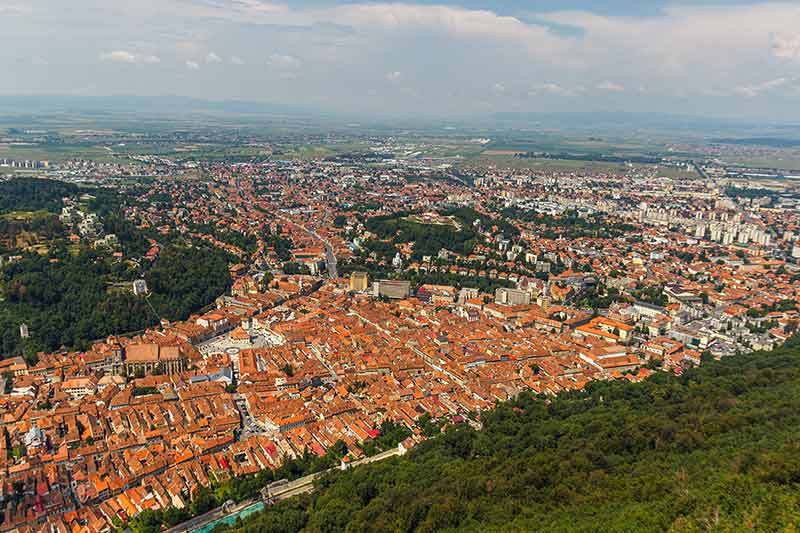
Brasov, founded in 1211, has one of the largest populations in Romania, with more than 230,000 inhabitants.
It is surrounded by the Carpathian Mountains and is home to the beautiful lake, Noua, where you can picnic or have a meal in one of the grill restaurants.
The town has several squares, such as Council Square, which is a gathering point for locals so is a good place to go to experience Romanian life.
Here you will find Romania’s largest Gothic church, the Black Church, which was built between 1385 and 1477.
Brasov is home to one of the narrowest streets in Europe, (Rope Street, which is 1.09 metres (3.6 feet) to 1.21 metres (4 feet) wide and 80.7 metres (265 feet) long.
There is a legend that says that lovers used to meet there in secret because their parents didn’t approve of their relationship and if they kissed there, they would be together forever.
If you are in Brasov in December, you will have the opportunity to visit the Christmas Markets, which are open all month.
There are stalls selling traditional Romanian food and Christmas ornaments, with festive lights and music playing.
13- National Parks
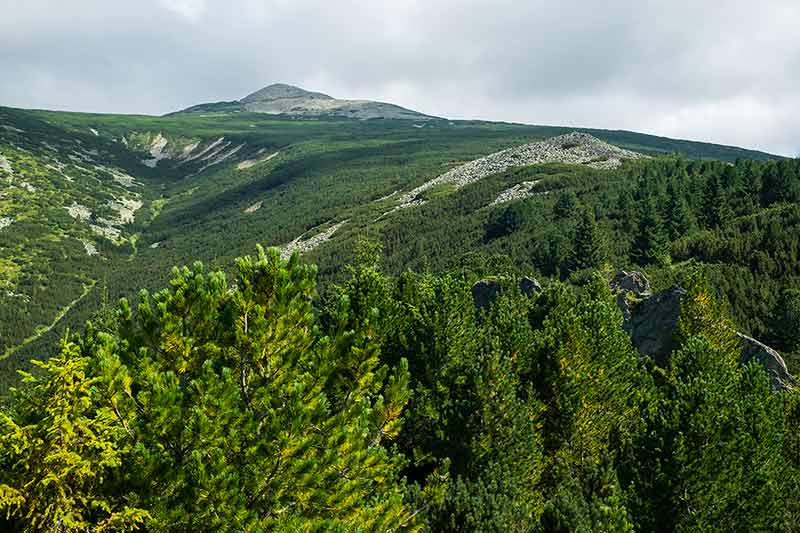
Romania has 14 national parks including the Danube Delta in the east of the country and the Bigar Waterfall in the west.
The longest mountain range in Romania is in the Rodna Mountains National Park which offers visitors caves and valleys to visit.
At Retezat National Park, you will find more than 80 glacial lakes and an extensive old-growth forest.
Piatra Craiului National Park is a great place for experienced hikers as they can explore the limestone ridge, with gorges, bat caves and lovely mountain villages to find.
Cheile Nerei-Beusnita National Park has a 22 km (13.67 miles) gorge to hike through and the deeper you go, the wilder it becomes.
You might even see horned vipers and lynxes.
14- The Palace Of Parliament
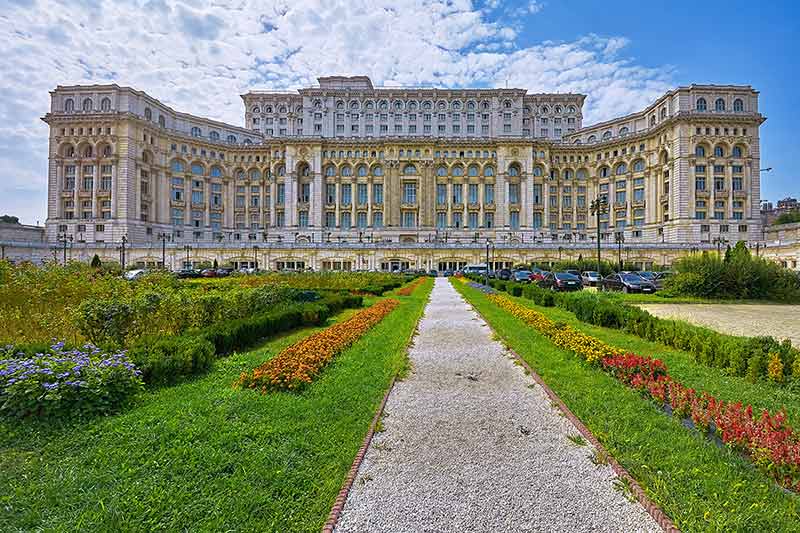
The Palace of Parliament is in the capital, Bucharest, and is the meeting place of the members of Parliament.
It is open to the public for guided tours which take you throughout most of the building.
The Panoramic Tour is the best choice as it takes you to the terrace where you get a brilliant view of the city.
The palace is enormous and holds the record for being the heaviest building in the world partly due to the fittings which include hundreds of chandeliers.
The parliament is so big because when the earthquake of 4th March 1977 destroyed most of the city, the Romanian dictator, Ceausescu, decided to build a parliament bigger than the Kremlin in Moscow and the White House in Washington.
It is estimated that the Palace of the Parliament weighs 4,098,5000,000 kg (9.04 billion pounds). Skip the line and book your tickets here.
15- George Enescu
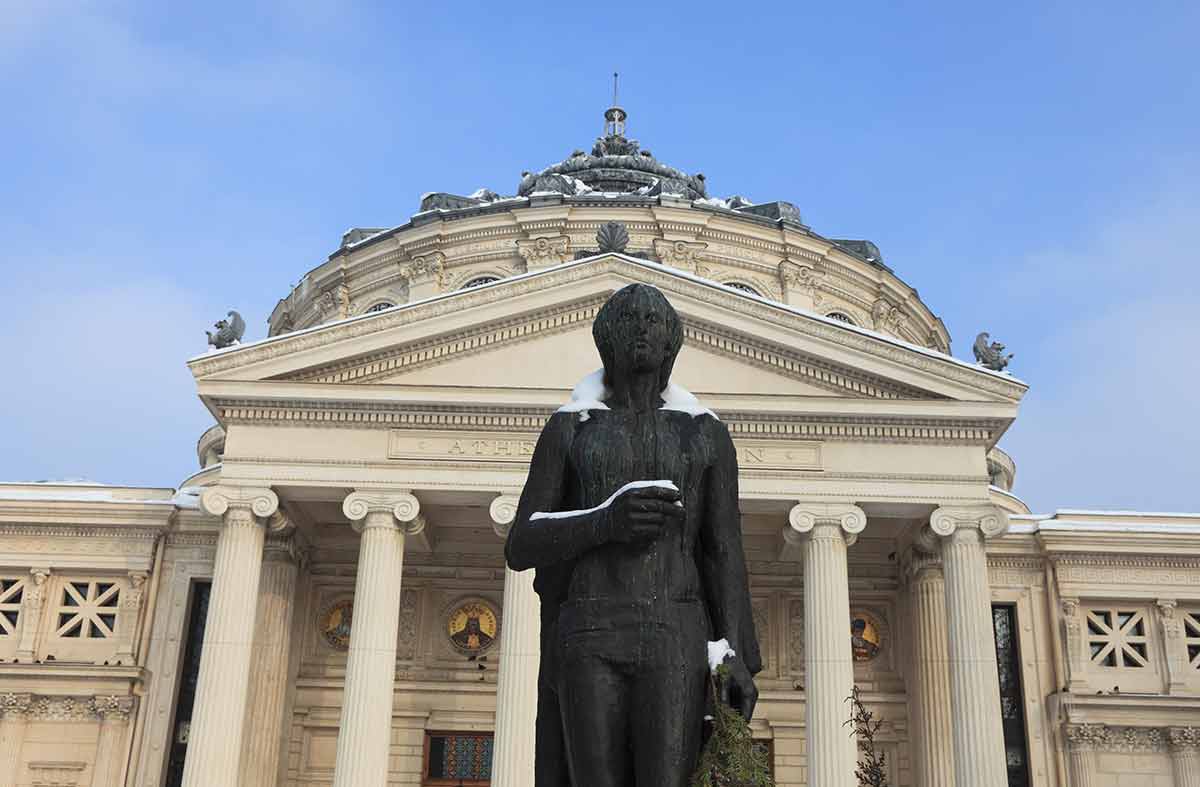
George Enescu was one of the greatest musicians in Romanian history and is known the world over.
He was a composer, violinist, conductor and music teacher and lived from 1881 to 1955.
Enescu was a child prodigy who started to play the violin at the age of four and composing at five.
He had his first public appearance playing the violin when he was just eight.
Between 1888 and 1894, Enescu studied at the Music Conservatory in Vienna.
His well-known compositions are from the early days of the 20th century, such as Romanian Rhapsodies, Suite for the Orchestra, and his first Symphony in E.
In 1936, he wrote the opera, A’Dipe. During his career, he also wrote five symphonies, two of them unfinished, and chamber music.
As an adult, Enescu lived between Paris and Bucharest as well as touring in many European countries.
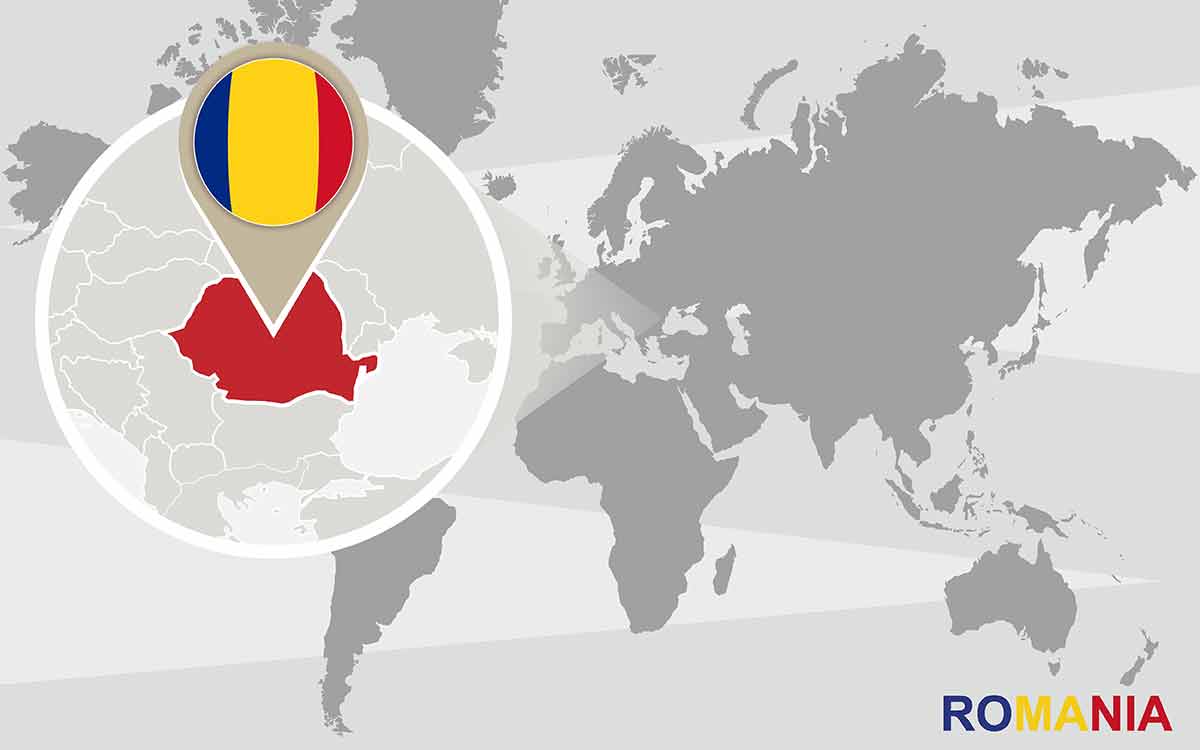
You may also be interested in:
- What is Turkey known for?
- What is Portugal known for?
- What is Greece known for?
- What is France known for?
- What is Belgium known for?
- What is Switzerland known for?
- What is Poland known for?
- What is Australia known for?
- What is Mexico known for?
- What is Germany known for?
- What is Croatia known for?
- What is Hungary known for?
- What Is Romania known for?
- What is The Netherlands known for?
- What is Scotland known for?
- What is Canada known for?
- What is Japan known for?
- What is China known for?
- What is Singapore known for?
- What is Vietnam known for?
- What is Thailand known for?
- What is Cuba known for?
- What is Argentina known for?
- What is Colombia known for?
- What is Spain known for?
- What is Italy known for?
- What is Ireland known for?
- What is Oregon known for?
- What is Colorado known for?
- What is Tennessee known for?
- What is Hawaii known for?
- What is Alabama known for?
- What is Illinois known for?
- What is Mississippi known for?
- What is Nevada known for?
- What is Maine known for?
- What is Idaho known for?
- What is Delaware known for?
- What is Maryland known for?
- What is Wisconsin known for?
- What is Miami known for?
- What is Virginia known for?
- What is West Virginia known for?
- What is Massachusetts known for?
- What is Boston known for?
- What is Florida known for?
- What is Kentucky known for?
- What is Indiana known for?
- What is Montana known for?
- What is Nebraska known for?
- What is Pennsylvania known for?
- What is Vermont known for?
- What is Arizona known for?
- What is California known for?
- What is South Carolina known for?
- What is North Carolina known for?
- What is Texas known for?
- What is Michigan known for?
- What is Ohio known for?
- What is Louisiana known for?
- What is Oklahoma known for?
- What is New York known for?
- What is Georgia known for?
- What is Utah known for?
- What is Connecticut known for?
- What is Rhode Island known for?
- What is Iowa known for?
- What Is Minnesota known for?
- What is New Hampshire known for?
- What is Arkansas known for?
- What is New Jersey known for?
- What is Missouri known for?
- What is North Dakota known for?
- What is South Dakota known for?
- What is Wyoming known for?
- What is Alaska known for?
- What is Washington known for?
- What is Seattle known for?
- What is New Mexico known for?
- What is Kansas known for?
- What is San Francisco known for?
- What is Chicago known for?
- What is Denmark known for?
- What is Norway known for?
- What is Sweden known for?
Plan Your Trip

Rent A Car – Find the best car rental rates at Discover Cars. They compare car hire companies to provide you with the best deal right now.

Find A Hotel – If you’re curious about this article and are looking for somewhere to stay, take a look at these amazing hotels.
